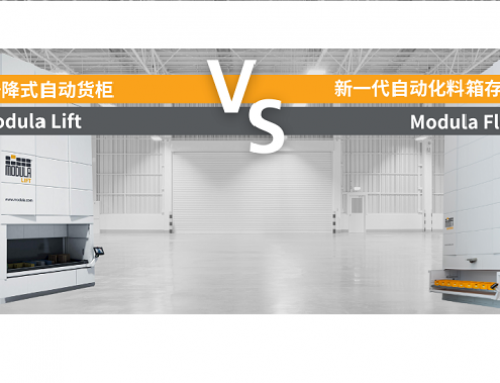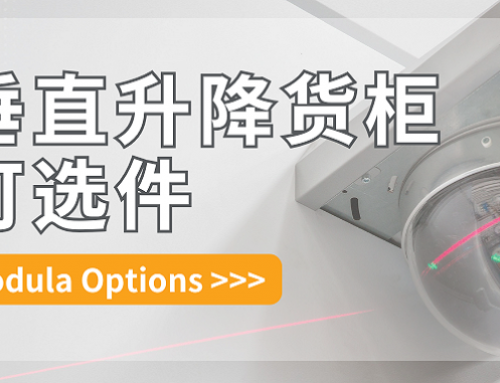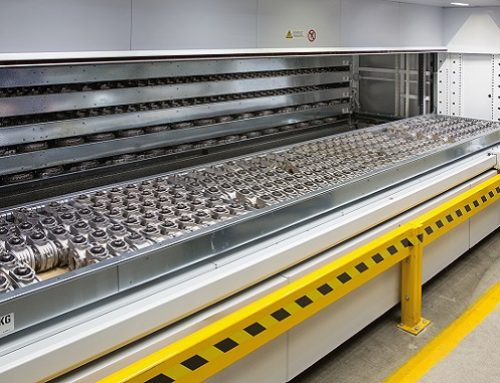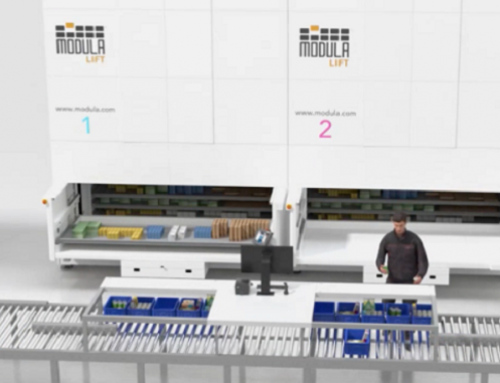If ten years ago we were still imagining what the “warehouse of the future” might look like, today many of those ideas have already moved from concept to reality.
In modern warehouses, robots move through aisles like busy worker bees, artificial intelligence predicts inventory needs, drones carry out stock counts, and the Internet of Things makes every item traceable in real time. This is not a movie, but a real transformation happening in the industry.
The trend of warehouse intelligence is unstoppable. So, what will the warehouse of the future look like? And how should we prepare in advance?
01
Why is warehouse upgrade a must?
First, customer expectations are rising.
From “three-day delivery” to “same-day delivery,” and now “two-hour doorstep delivery,” consumer demands continue to escalate. Warehouses can no longer serve merely as storage spaces — they must become the core hub for fast response and accurate fulfillment.
Second, labor challenges are intensifying.
On the one hand, e-commerce and manufacturing orders are surging; on the other hand, warehouse positions are hard to fill and even harder to retain. Many companies are being forced to rethink: Which processes can be handled by robots? Which tasks can be optimized through software and automation?
Third, supply chains must become more resilient.
Pandemics, international trade fluctuations, and raw material shortages — time and again, global disruptions have exposed the fragility of traditional supply chains. Companies need warehouses that are more flexible and more visible in order to withstand uncertainty.
Fourth, sustainability is becoming a mandatory requirement.
Technology also plays a critical role in driving green warehousing. From optimizing delivery routes to reducing packaging waste, sustainability is turning into a strategic priority.
02
3 Futuristic Warehouse Models
As warehouse operations evolve, new models are emerging to meet the demands of modern supply chains. The warehouse of the future will prioritize flexibility, automation, and sustainability, enabling faster order fulfillment, smarter inventory control, and a smaller environmental footprint.
These are three warehouse models that will define the future of warehousing:
On-Demand Warehousing
On-demand warehousing, also known as flexible warehousing, is a warehouse fulfillment model that allows companies to rent space and fulfillment services on a short-term or seasonal basis. It enables rapid scalability without long-term leases and is ideal for handling demand surges and expanding into new geographic markets.
It also allows companies to partner with 3PL providers to meet consumer expectations surrounding fast-tracked shipping by facilitating same-day order fulfillment and delivery.
Smart warehousing is a warehouse fulfillment model that uses advanced technologies such as artificial intelligence, Internet of Things, robots and automated storage and retrieval systems to automate manual tasks in the warehouse.
Smart warehouse systems boost productivity and inventory management, while reducing errors caused by manual labor.
Green Warehousing
Green warehousing is a warehouse fulfillment model that utilizes sustainable and eco-friendly practices to reduce the environmental impact of the logistics and supply chain industry.
- Using solar or renewable energy
- Implementing energy-efficient lighting and HVAC systems
- Reducing waste through eco-friendly packagingand smart layout design
- Optimizing space vertically to reduce building footprints and energy use
Green practices are becoming standard features of future-ready warehouses, helping companies meet both regulatory and consumer expectations.
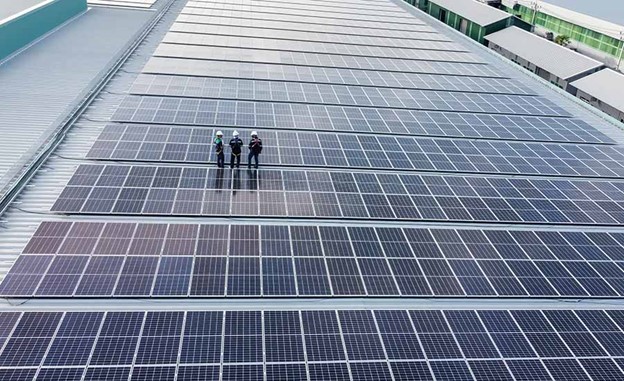
03
Futuristic Warehouse Technologies
From autonomous robots to warehouse drones, a wide range of technologies is transforming the way modern warehouses operate. These future warehouse technologies are helping facilities improve speed, accuracy, safety, and space utilization, laying the foundation for fully automated, data-driven operations.
Here are some of the most important technologies shaping thewarehouse of the future:
Automated Storage and Retrieval Systems
Automated storage and retrieval systems (ASRS) are computer-controlled technologies that store and retrieve inventory from designated storage locations. These technologies improve space efficiency and picking accuracy while reducing the need for manual labor.
AS/RS systems work in conjunction with a warehouse management system (WMS) to identify the correct items to retrieve.
Common AS/RS technologies include:
- Vertical Lift Modules (VLMs)
- Horizontal Carousels
- Unit-loaders and mini-loaders
- Tote shuttles
These solutions are increasingly used to maximize vertical space and improve throughput in high-density storage environments.
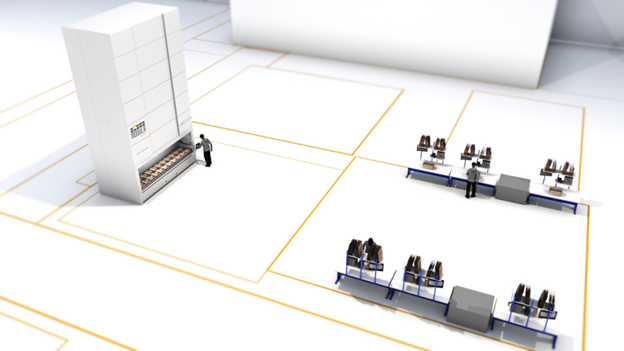
Artificial Intelligence (AI) and Machine Learning (ML)
Artificial intelligence (AI) refers to software and systems capable of performing tasks that typically require human intelligence, such as identifying inventory, optimizing pick paths, or analyzing supply chain data. In the warehouse, AI supports tasks like:
- Detecting and preventing picking errors
- Predicting stock replenishment needs
- Optimizing labor and equipment usage
Machine Learning (ML), a subset of AI, enables systems to continuously improve their performance by analyzing large data sets. Over time, ML algorithms can refine forecasting models, reduce error rates, and support proactive decision-making.
Mobile Robots (AMRs and AGVs)
Automatic guided vehicles (AGVs) are computer-controlled and sensor-guided robots that transport items within the warehouse.
AGVs are equipped with wires and reflective markers and move through pre-defined pathways. They require guidance from warehouse operators to function.
On the other hand, autonomous mobile robots (AMRs) are the descendants of AGVs. AMRs are sophisticated robots that utilize artificial intelligence and sensors without needing the guidance of warehouse employees to function.
While both AGVs and AMRs can transport inventory within the facility, AMRs are more advanced robots that can independently navigate the warehouse without pre-defined routes.
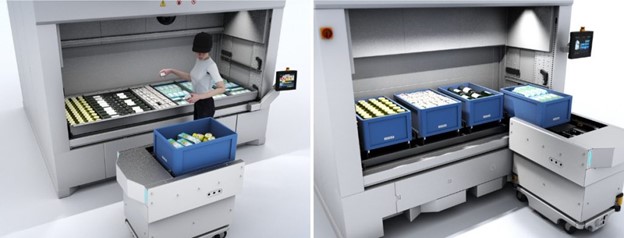
Internet of Things (IoT)
Internet of Things (IoT) devices include RFID tags, smart sensors, and connected devices that track assets, monitor equipment, and enable real-time visibility across warehouse operations.
For example:
- Predictive maintenance tools alert teams when equipment performance declines, helping avoid unplanned downtime
- RFID tags help track inventory automatically
- Sensors monitor temperature or humidity for sensitive goods
Warehouse Drones
Warehouse drones, also known as unmanned aerial vehicles (UAVs), are aerial robots equipped with cameras and sensors. They can be used for:
- Cycle counting and inventory audits
- Capturing high-resolution images of storage zones
- Accessing hard-to-reach areas safely
Some drones operate autonomously, while others are manually piloted. They help reduce the time and labor needed for manual inventory checks and improve stock accuracy.
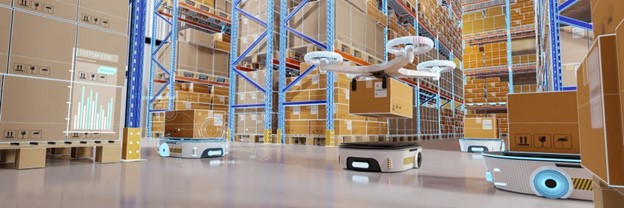
04
How To Build a Warehouse of the Future With Automated Warehouse Solutions
As an industry leader in advanced automated storage solutions and warehouse management systems, Modula transforms warehouses across industries to improve efficiency, productivity, picking accuracy and inventory management.
Our automated warehouse solutions include:
1.Modula Vertical Lift Module
Modula’s Vertical Lift Modules (VLMs) utilize your warehouse’s ceiling height to create more storage and improve warehouse organization.
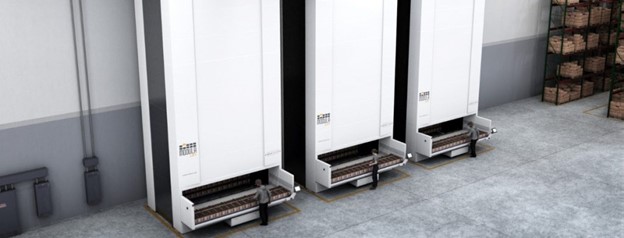
Our VLM models include:
- Modula Lift:Perfect for spare and industrial parts, available in a wide range of capacities and sizes
- Modula Slim:The ideal storage solution for facilities with minimal floor space, thanks to its compact size
- Modula Next:A cutting-edge automated storage and retrieval system that merges the space optimization of vertical lift modules (VLMs) with the precision and control typically found in industrial vending technology
- Modula Flexibox:With the capacity to handle up to 180 bins per hour, Modula Flexibox minimizes unnecessary movements, maximizes vertical storage and streamlines overall warehouse operations
Modula VLMs allow you to:
- Save 90% of your floor space by taking advantage of your ceiling height
- Improve employee safety by automatically delivering inventory to your warehouse operators
- Secure goods in an enclosed system with a reliable locking feature and restricted access
2. Modula Picking Solutions
Modula picking solutions minimize the search time required for locating inventory and boost picking accuracy when processing individual or multiple orders.
Modula picking solutions allow you to:
- Boost picking speed and accuracy, thanks to Put to Light devices that help your warehouse operators navigate their way to the correct picking area
- Manage inventory more accurately, thanks to in-depth views of your current and forecasted inventory
3. Modula IOT
Modula IOT is a remote management, support, and analytics platform that enables you to quickly collect data from your Modula vertical lift modules, regardless of where they are in your warehouse.
Built-in and turned on around-the-clock, it offers an intuitive online portal for you to manage and track your operations securely from any location and device.
Modula IOT allows you to:
- Track your Modula automated warehouse solutions remotely
- Monitor your warehouse from any location with remote diagnostics, support and resolutions, while implementing predictive maintenance
- Track the status of your warehouse, including unit statistics, energy consumption and equipment health
- Receive real-time notifications about the status of each module
- Get reports on energy consumption, fulfilled orders, completed cycles and tray usage efficiency

05
Future is Coming
According to the 2025 MHI Annual Industry Report jointly released by the Material Handling Institute (MHI) and Deloitte, in just this year alone, 90% of supply chain leaders are already investing in automation technologies.
To remain competitive, it is not enough to merely meet customer demands — businesses must stay ahead of them with intelligent and scalable technologies.
With Modula’s automated warehouse solutions, you can move faster toward the future of operations and achieve comprehensive breakthroughs and upgrades in warehousing.

